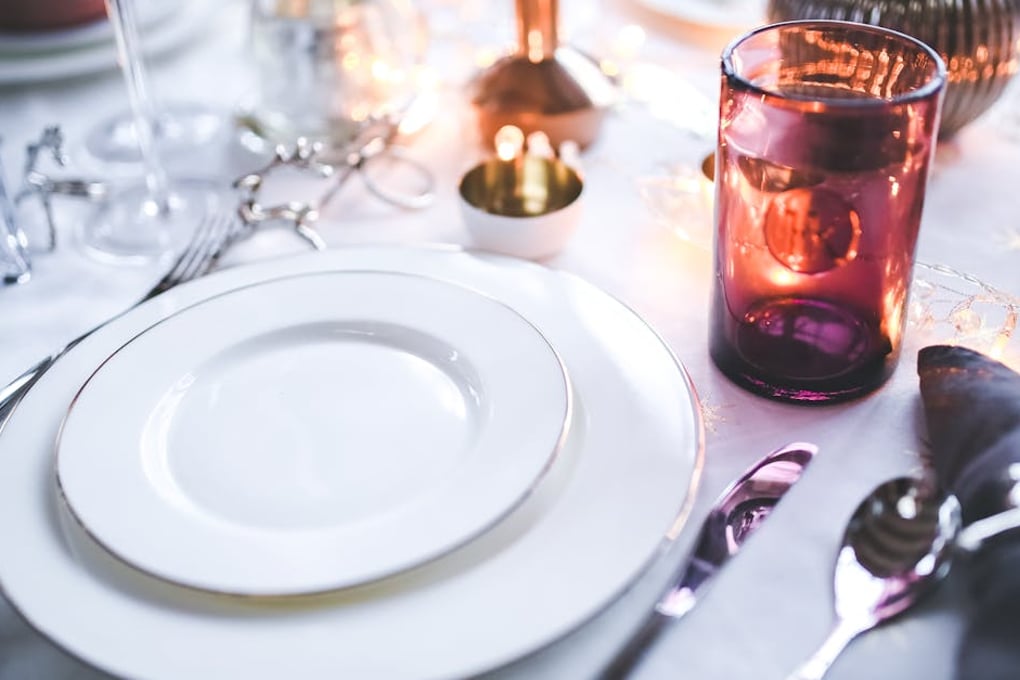Last Friday was the 12th annual “Think Positive Gala” to benefit the Epilepsy Foundation of Connecticut at the Aqua Turf Banquet Hall in Southington, CT. As we settled into our seats for the opening remarks, the wait staff, dressed in black and white, each with a loose gray tie, came around with bread, butter and salad, the first of multiple courses that evening. I was sitting with a group of other college students invited to attend the event. As the waitress placed a dish of leafy greens in front of us, the predictable mild panic set in among the group. No one knew how to survive a formal dinner. Which fork do I use for the salad? If I use this knife for the butter, I won’t have one for my chicken! Is that your fork or mine? And so on…
Time and time again we run into this situation. Whether it is at a wedding or a banquet, a religious celebration or simply a nice night out on the town with your significant other, we cannot avoid the formal dinner set up. So, let’s break it down into manageable chunks and figure out what it really means.
The Basics
When you attend a formal event there are a handful of guidelines to follow to make sure you don’t embarrass yourself during dinner. When you sit down, put your napkin on your lap and keep your smartphone and other items, like keys, in your pockets or purses. The Washington Post argues that if your smartphone is in sight, you generally miss more “subtle cues, facial expressions, and changes in the tone of [your] conversation partner’s voice, and have less eye contact”. Also, some see it as rude to have your phone present, especially during professional events. If you do need to use your phone for some reason (and it better be a good one!), excuse yourself from the table, leaving your napkin folded on the back of your seat, and use your phone outside.
When you’re done with your specific course, place your fork and knife parallel to each other aimed in the 4 o’clock direction. This signifies to the waiter or waitress that you are finished with your plate and they can clear it. If you want to rest and continue your chicken marsala in a few minutes, place the utensils with the handles towards the 4 o’clock and 8 o’clock positions, respectively. The idea behind this is that once your fork and knife touch the plate, they never touch the tablecloth again. After you’re finished eating all of your courses, fold your napkin and place it on the left side of your place setting.
On top of all this, don’t forget the rules your parents taught you growing up. Chew with your mouth closed, don’t reach across the table, wait for everyone to be served before eating, and don’t talk with your mouth full.

The Place Setting
And now on to the daunting part, the infamous array of forks, knives, spoons, plates, and glasses.
Looking at the specifics, there are countless variations of formal and informal dinner placements depending on both the style of event you are attending and the type of food you are eating. If you know you’re having more than three courses, make sure you brush up on the respective silverware needed. However, most of us won’t encounter an event this fancy in the near future, so we will work with the most common place setting.
As a rule of thumb, work from the outside in. In most cases, the salad fork is on the far left and the soup spoon is on the far right. These denote the edges of your place setting.
Another great rule of thumb to also help you figure out what belongs to you and what is your neighbors is the “bed rule”, which I first learned about at the UConn Alumni Etiquette Dinner last spring. Your bread plate is on the left and drinks are on the right, respective of the letters “b” and “d” in the word bed.
But in most settings, there will only be two forks for you to use during your meal. The one on the outer left edge of your setting is the salad fork and the one to the right is the dinner fork. The two glasses on the top right corner of the place setting are for wine (right) and water (left).
If there are any silverware above your plate, dessert is on its way. Usually there will be a fork and spoon there for all the chocolaty goodness you eat after your filet.
Now next time you attend an even with more than a fork and a knife, don’t sweat it – you are more than ready. Keep in mind the “bed rule” and working from the outside in, and you will be the star of the show. You will survive the formal dinner!


